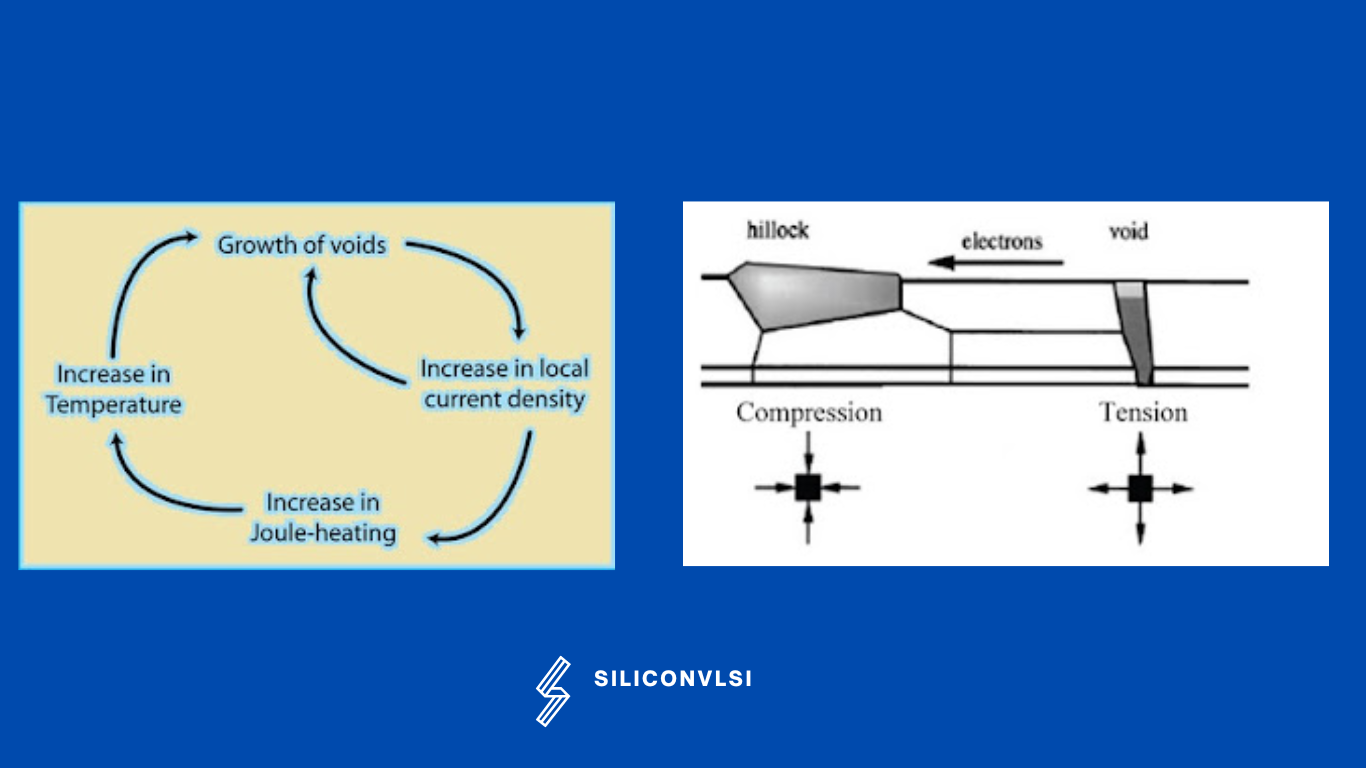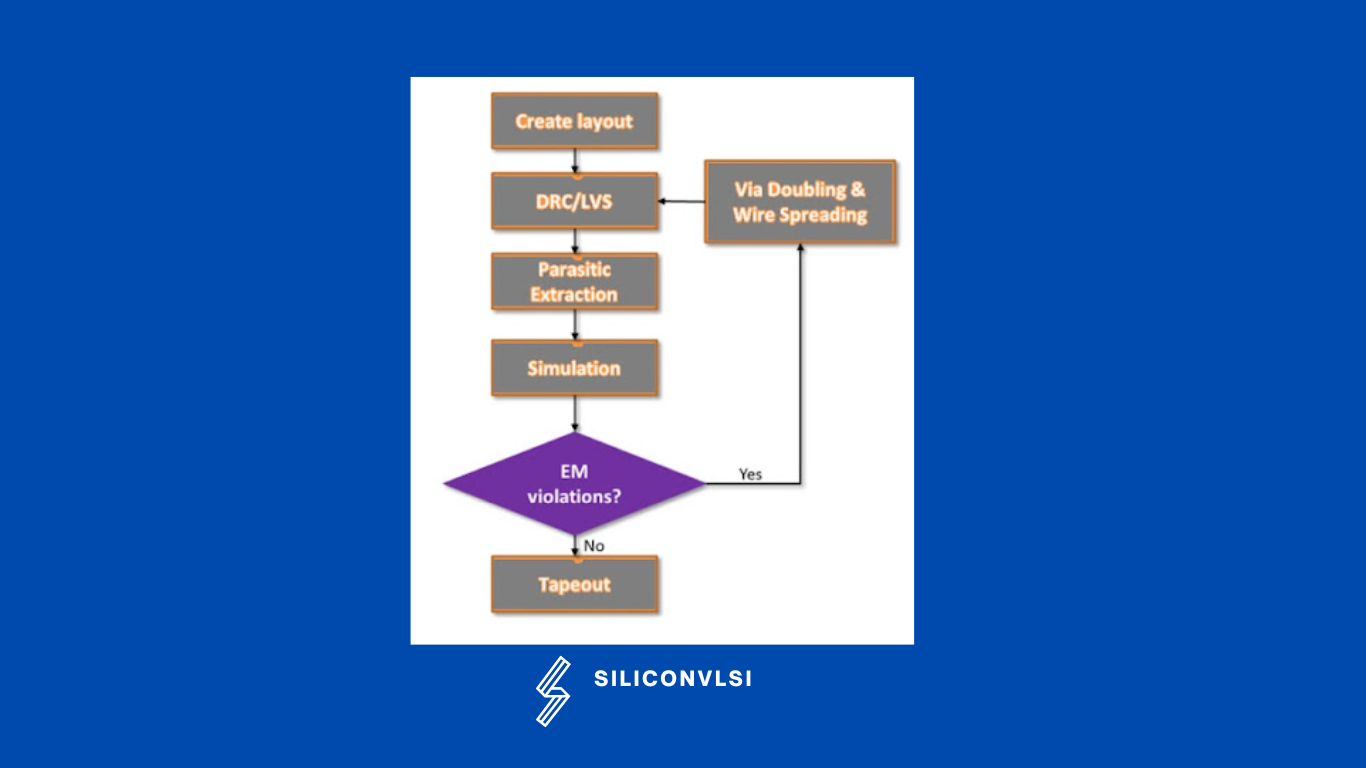Electromigration Effect in VLSI
Electromigration is the gradual displacement of metal atoms in a semiconductor and It occurs when the current density is high enough to cause the drift of metal ions in the direction of the electron flow and is characterized by the ion flux density.
Another way we can say that Electromigration (EM) is generally considered to be the result of momentum transfer from the electrons due to high current density.
“Electromigration effect also called as aging effect“
The electromigration effect depends on the conductor and the nature of the conductor depends on, crystal size, interface and grain-boundary chemistry, and the magnitude of forces that tend to dislodge them, including the current density, temperature, and mechanical stresses.

EM measurement and analysis flow.

How to reduce EM(Electromigration)?
- Use the proper width of the metal so that it should carry all charges.
- Insert the buffer if the wire length is too long
- Use more vias
- Avoid jogs in metal
- Do not route long metal
- Use a higher wire number in the routing because it has high resistance so it is able to uphold a large current density.
- If we don’t have space to increase the width, then add parallel metal.
- We can also use higher metal because from lower to higher metal current carrying capacity also increases
To mitigate the effects of electromigration and ensure the reliability of integrated circuits, various techniques are employed during the design and manufacturing process. The following are some common prevention and mitigation techniques:
Layout and Routing Considerations: Careful layout and routing of interconnects can minimize the effects of electromigration. Techniques such as using wider wires, avoiding sharp bends, and reducing current density in critical areas can help improve the reliability of interconnects.
Material Selection: Choosing appropriate metals with higher resistance to electromigration is important. Metals with better atomic structures and lower diffusion rates can significantly enhance the electromigration resistance of interconnects.
Current Density Limiting: Limiting the current density in metal interconnects helps reduce the rate of electromigration. By distributing the current more evenly and avoiding localized high-current density regions, the risk of electromigration-induced failures can be mitigated.
Temperature Control: Maintaining optimal operating temperatures can prevent or reduce the effects of electromigration. Thermal management techniques, such as efficient heat dissipation and temperature monitoring, play a vital role in minimizing the impact of elevated temperatures on interconnect reliability.
Causes of Electromigration
Several factors contribute to electromigration in metal interconnects. Understanding these causes is important for developing strategies to mitigate their effects. The following are the primary causes of electromigration:
Current Density: High current densities flowing through metal interconnects can accelerate the movement of atoms and increase the likelihood of electromigration. As the current density increases, the electromigration-induced damage becomes more prominent.
Temperature: Elevated temperatures enhance the diffusion of atoms, further exacerbating the electromigration effect. High operating temperatures in ICs can accelerate electromigration and reduce the lifespan of interconnects.
Material Composition: The choice of metal used for interconnects can significantly impact electromigration. Different metals have different atomic structures and diffusion properties, which can affect the susceptibility to electromigration.
Factors Affecting EM
- Wire Length
- Wire Width
- Wire Size
- Wire Jog
- Wire Material